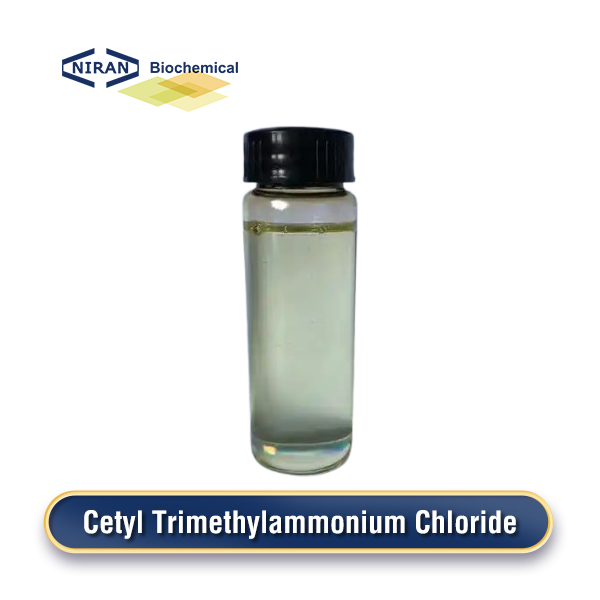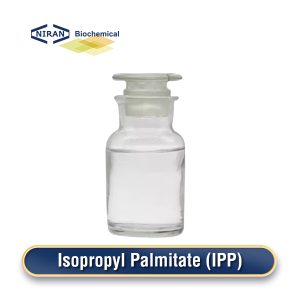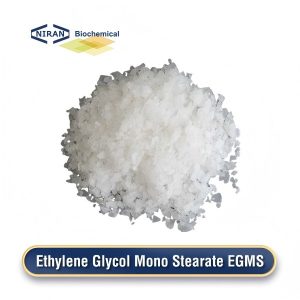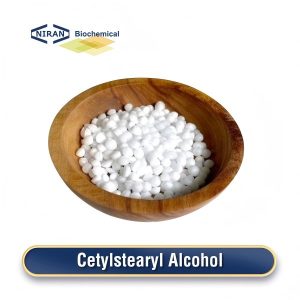Cetyl Trimethylammonium Chloride
- CAS Number: 112-02-7
- Chemical Formula: C16H33ClN
- MOQ: 1000KG
- Shelf Life: 2 years
- Synonyms: CTAC, Cetyltrimethylammonium chloride, Cetylmethylammonium chloride, Stearyltrimethylammonium chloride
Product Description
What Is Cetyl Trimethylammonium Chloride?
Cetyl Trimethylammonium Chloride (CTAC) is a quaternary ammonium salt commonly used as a surfactant and emulsifying agent. Its capacity to lower surface tension and stabilize emulsions makes it a common ingredient in industrial, personal care, and cosmetic compositions.
CTAC is derived by reacting cetyl alcohol (a fatty alcohol) with trimethylamine and hydrochloric acid. The process involves the esterification of cetyl alcohol with trimethylamine, followed by neutralization with hydrochloric acid to form the chloride salt. The resulting product is a white, waxy solid or colorless liquid, depending on the temperature and formulation. For usage in shampoos, conditioners, and skin care products, CTAC is perfect because it works so well at cleaning, conditioning, and maintaining the stability of different formulas. It also exhibits antimicrobial properties, which make it useful in disinfection and sanitization products.
Related Parameters:
| Item | Standard |
| Appearance | White to off-white powder or flakes |
| Purity | ≥ 98.0% |
| Chloride (Cl⁻) | ≤ 0.5% |
| Moisture Content | ≤ 2.0% |
| Acidity (pH, 1% solution) | 4.5 – 7.0 |
| Melting Point | 70°C – 75°C |
| Heavy Metals | ≤ 10 ppm |
| Arsenic (As) | ≤ 3 ppm |
| Iron (Fe) | ≤ 10 ppm |
| Free Amine Content | ≤ 1.0% |
Recommended Dosage of Cetyl Trimethylammonium Chloride:
| Applications | Dosage |
| Cosmetic Formulations | 0.5% – 2% |
| Hair Care Products | 0.5% – 3% |
| Skin Care Products | 0.5% – 1% |
| Fabric Softeners | 0.05% – 0.2% |
| Industrial Applications | 0.05% – 0.1% |
| Antistatic Agents | 0.1% – 0.5% |
Cetyl Trimethylammonium Chloride Has Wide Range of Uses:
1. Cosmetic & Personal Care Products
- Skin Care: CTAC is used in emulsions, lotions, and creams for its ability to stabilize formulations and enhance skin smoothness. Additionally, it functions as a conditioning agent and a moderate surfactant.
- Hair Care: Common in shampoos, conditioners, and hair masks, CTAC provides conditioning benefits, making hair feel soft and manageable by reducing static and frizz. It also helps in detangling.
- Antistatic & Conditioning Agents: In various leave-in conditioners, hair serums, and styling products, CTAC prevents static buildup and enhances shine.
2. Home & Industrial Cleaning
- Fabric Softeners: CTAC is commonly used in fabric softeners to impart a smooth, soft feel to fabrics, making them feel comfortable and easy to wear.
- Cleaning Products: It works as a surfactant in household and industrial cleaning products, aiding in the removal of oils and dirt, while also improving foam formation.
3. Antimicrobial Properties
Disinfectants: Due to its antimicrobial nature, CTAC is incorporated into disinfecting solutions for surfaces, enhancing hygiene and reducing the growth of bacteria or fungi.
4. Antistatic Agents
Electronic Equipment: CTAC is used as an antistatic agent in products like coatings and sprays to prevent the buildup of static charge on equipment and surfaces, protecting sensitive components and materials.
5. Textile Industry
Softening Agent for Textiles: In textile processing, CTAC acts as a softening agent, improving the texture of fabrics, and can be used in fabric treatments to provide a smooth finish.
User Asked Question:
Q: What is the difference between Cetyl Trimethylammonium Chloride and Cetearyl Alcohol?
A: The quaternary ammonium compound cetyltrimethylammonium chloride is mostly utilized as a conditioning agent and surfactant, while cetearyl alcohol is a fatty alcohol that serves as an emollient and emulsifier. The key difference is that Cetyl Trimethylammonium Chloride is ionic, offering better conditioning and anti-static properties, while Cetearyl Alcohol is non-ionic and mainly used for thickening and stabilization in formulations.




